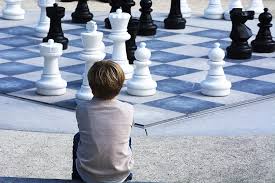How to Get Better at Chess?

How to Get Better at Chess: A Complete Beginner’s Guide
Chess is a captivating game that has captured the hearts and minds of people around the world for centuries. It’s a game of strategy, tactics, and critical thinking, and getting better at chess can be an incredibly rewarding journey. If you’re a complete beginner looking to improve your chess skills, you’ve come to the right place. In this article, we’ll guide you through the essential steps to help you become a more formidable chess player.
1-Learn the Basics
Understanding the Chessboard
Before diving into the game, you need to become familiar with the chessboard and its setup. A standard chessboard consists of 64 squares, arranged in an 8x8 grid. Each player has 16 pieces: one king, one queen, two rooks, two knights, two bishops, and eight pawns. Make sure you can correctly set up the board and identify each piece.
Piece Movement
Learn how each chess piece moves:
- King: Moves one square in any direction.
- Queen: Moves diagonally, horizontally, or vertically for any number of squares.
- Rook: Moves horizontally or vertically for any number of squares.
- Knight: Moves in an L-shape, two squares in one direction and then one square perpendicular.
- Bishop: Moves diagonally for any number of squares.
- Pawn: Moves forward one square but captures diagonally. On its first move, a pawn can advance two squares.
2-Grasp the Objective
In chess, the ultimate goal is to checkmate your opponent’s king. This means putting their king in a position where it’s under attack and cannot escape capture. Familiarize yourself with the concept of checkmate and practice setting up checkmates against an unprotected king.
3-Follow Opening Principles
Control the Center
At the start of the game, aim to control the center of the board with your pawns and pieces. Controlling the center allows for greater mobility and flexibility in your future moves.
Develop Your Pieces
Move your knights and bishops out from their starting positions to more active squares. Developing your pieces early helps you connect your rooks and prepares your king for safety.
Castle
Castling is a crucial move for king safety. It involves moving the king two squares toward a rook and then moving the rook to the square the king crossed. This puts your king behind a wall of pawns and your rook in a central position.
4-Understand Tactics
Forks, Pins, and Skewers
Learn basic tactical motifs like forks (attacking two pieces at once), pins (pinning an enemy piece to a more valuable piece behind it), and skewers (attacking a more valuable piece and forcing it to move, exposing a less valuable piece behind it).
Check and Threats
Always be aware of checks (when an opponent’s piece attacks your king) and threats to your own pieces. Develop your defensive skills to avoid falling into traps.
5-Practice, Practice, Practice
Improving at chess takes practice. Play games regularly, whether it’s against friends, computer programs, or online opponents. Online chess platforms often provide opportunities to play against players of varying skill levels.
6-Study the Masters
Study games played by chess grandmasters to understand their strategies and tactics. Books, videos, and online resources can provide valuable insights into their thought processes.
7-Endgame Basics
As you progress, focus on endgame techniques. Learn how to checkmate with different combinations of pieces (e.g., king and queen vs. king) and how to convert material advantages into victories.
The previous 7 rules are the basis for chess development. Here are other tips that could help you to improve your chess skills!
Join a Chess Community
Consider joining a local chess club or an online chess community. Engaging with fellow enthusiasts can be a valuable source of knowledge and motivation.
Analyze Your Games
After each game, review your moves to identify mistakes and missed opportunities. This self-analysis is essential for growth.
Be Patient and Persistent
Becoming a better chess player is a gradual process that requires patience and persistence. Don’t get discouraged by losses; instead, view them as opportunities to learn and improve.
In conclusion, chess is a game that rewards dedication and strategic thinking. By mastering the basics, practicing regularly, and continually expanding your knowledge, you can embark on a fulfilling journey to becoming a better chess player.
Remember, every move you make is a step toward improving your skills and enjoying the rich world of chess. So, set up the board, make your first move, and let the exciting adventure begin!